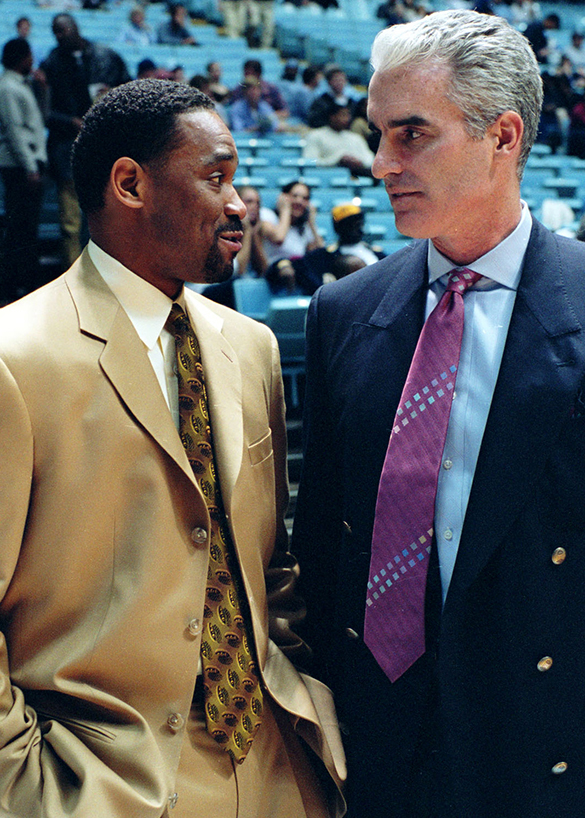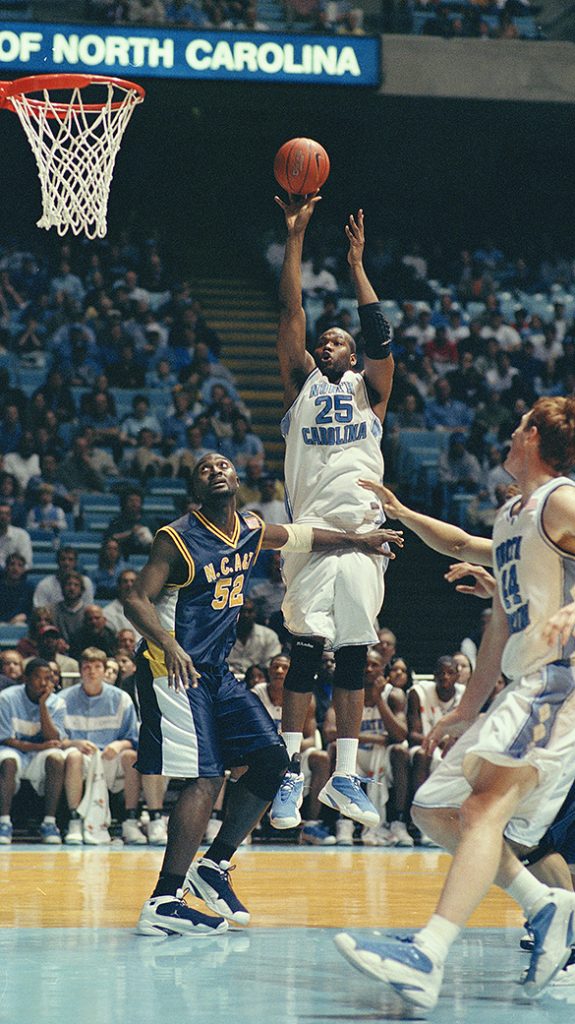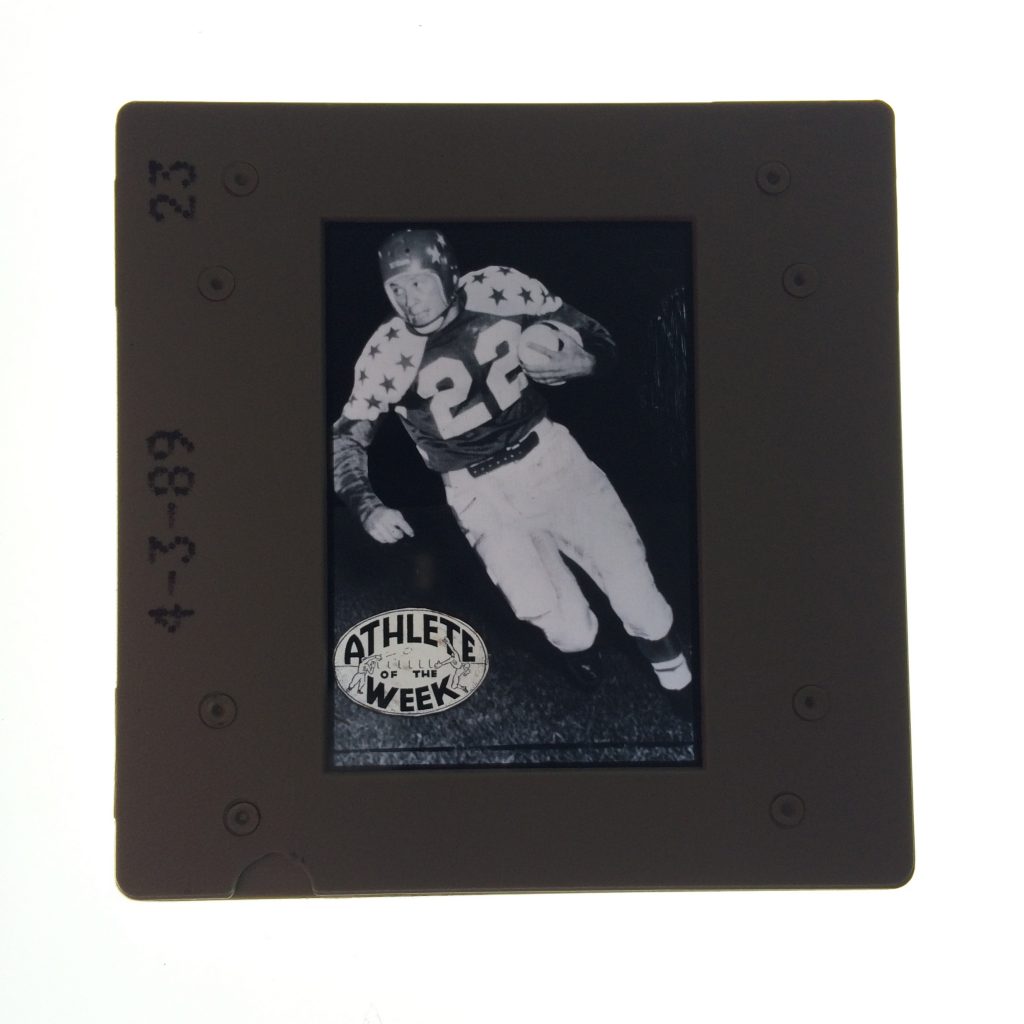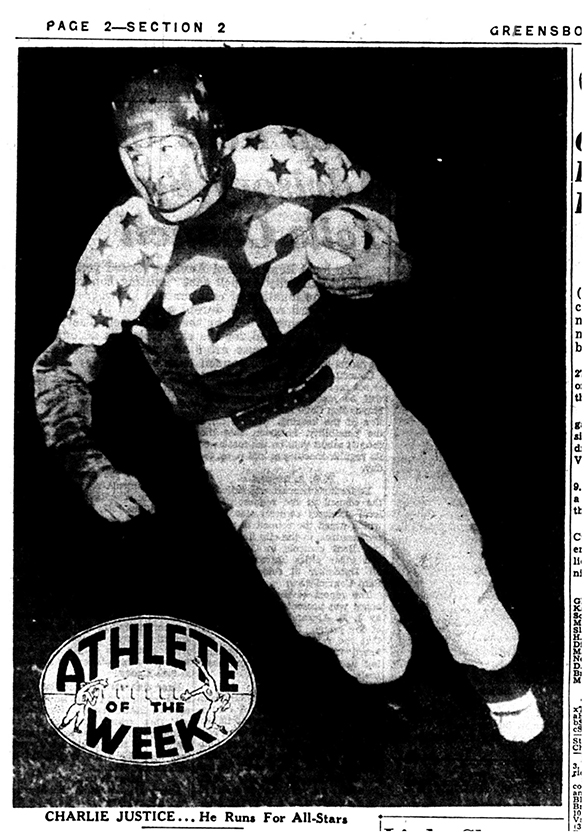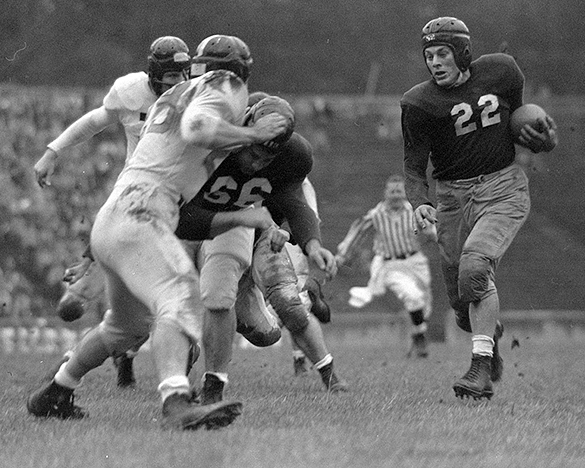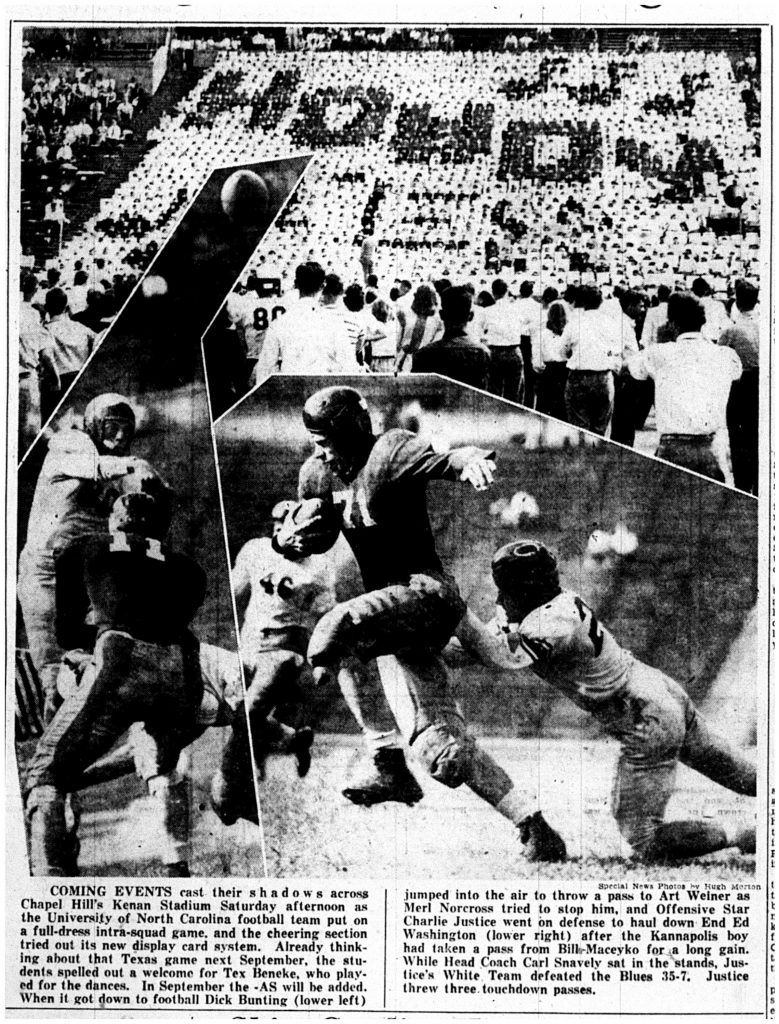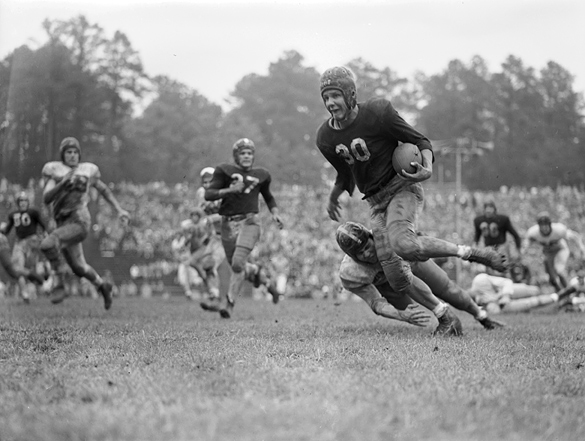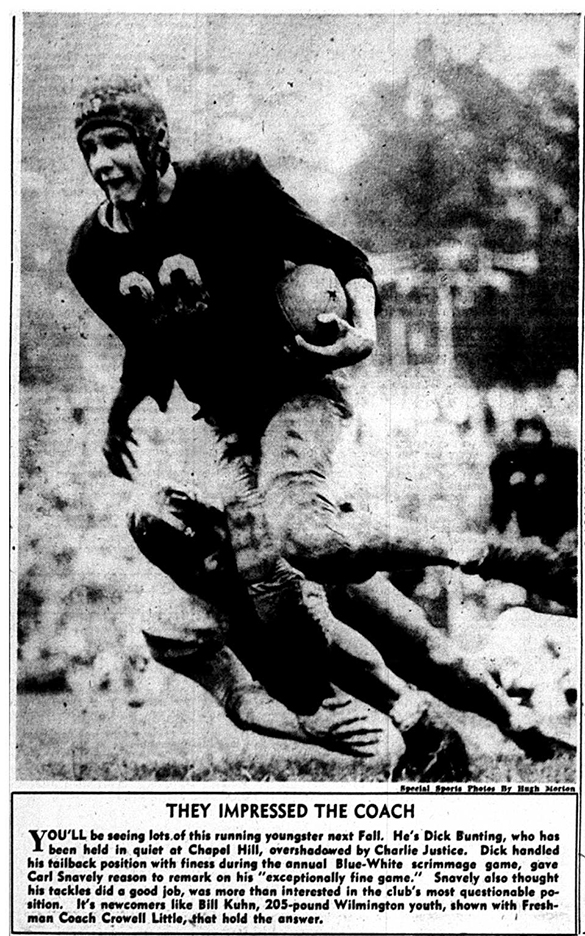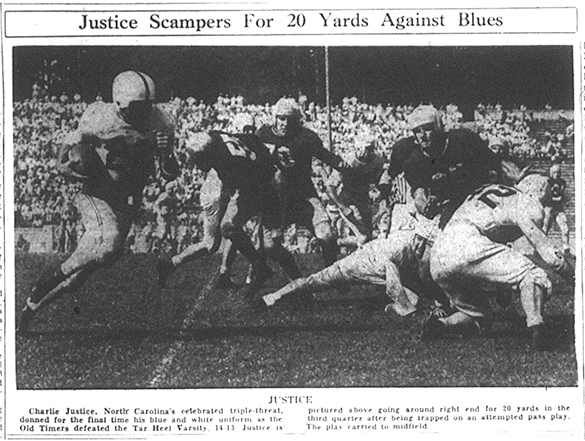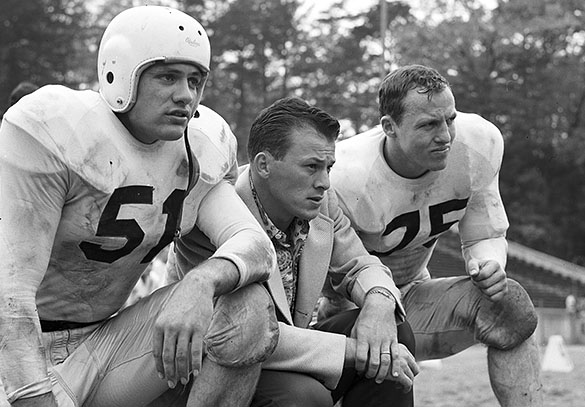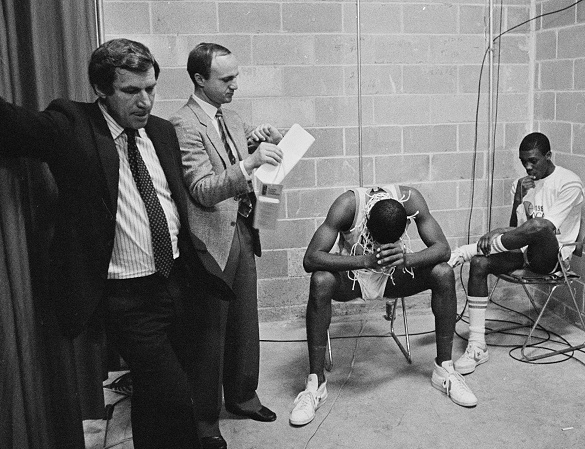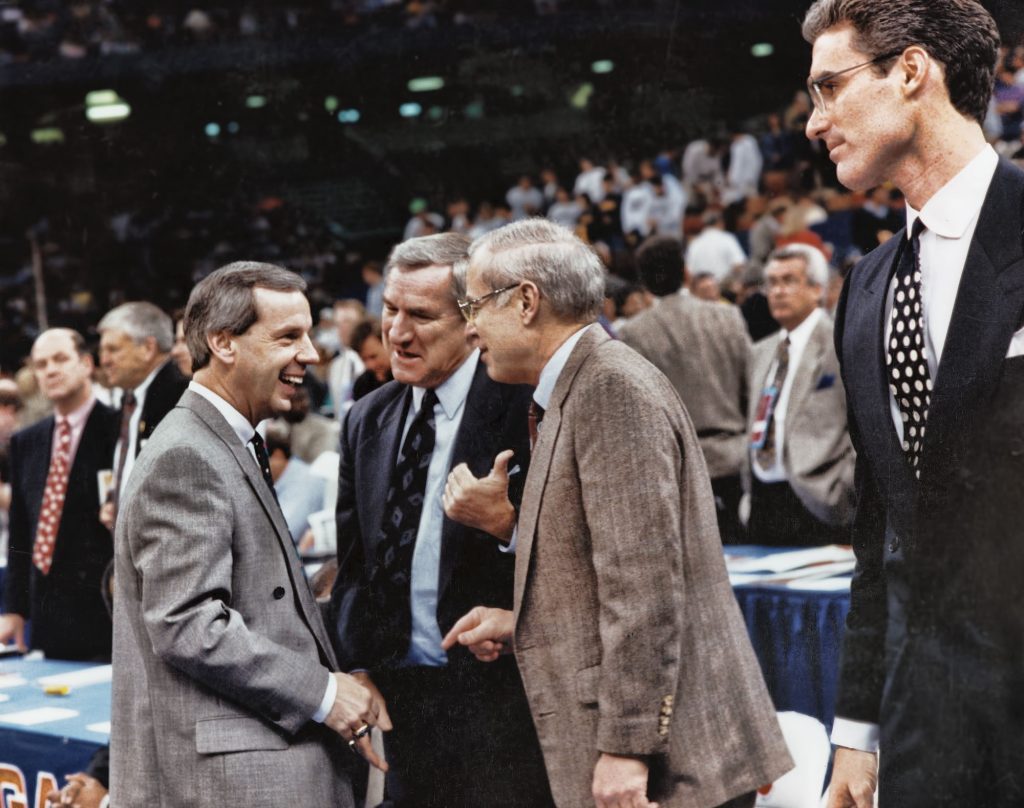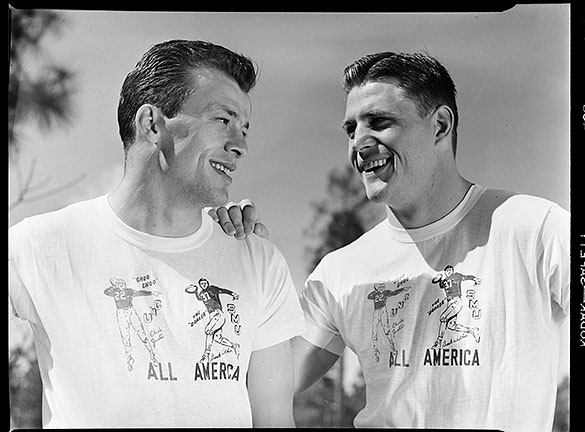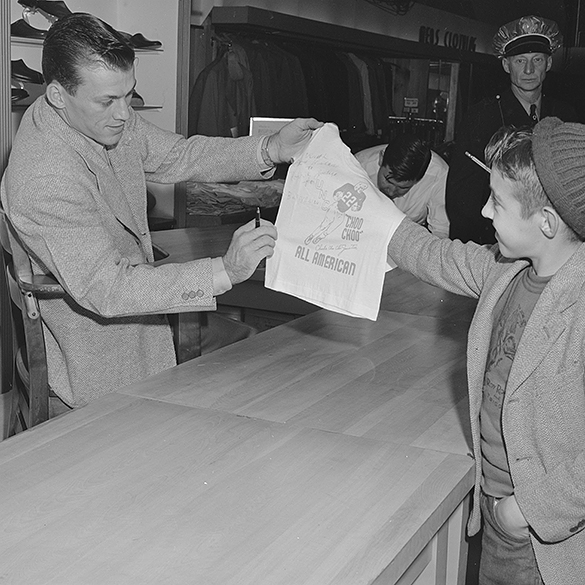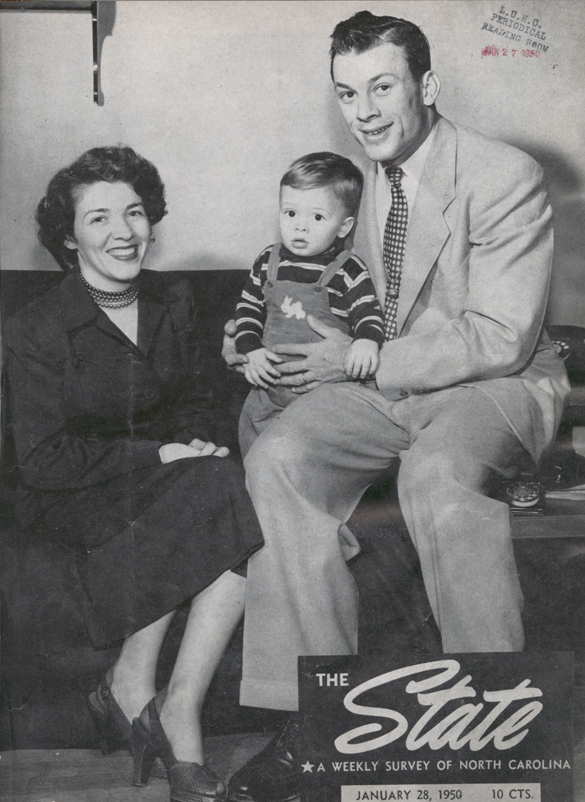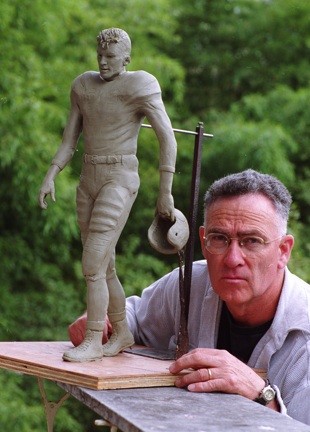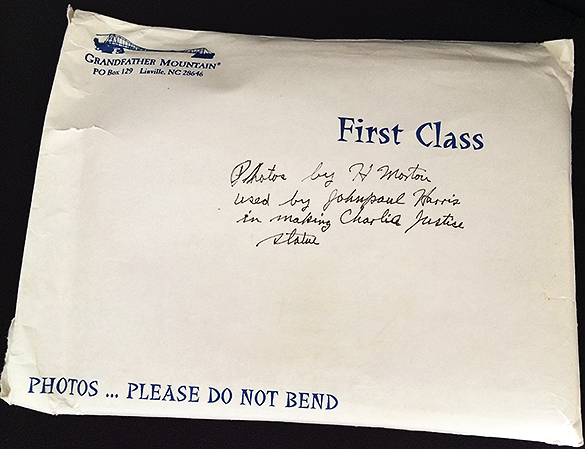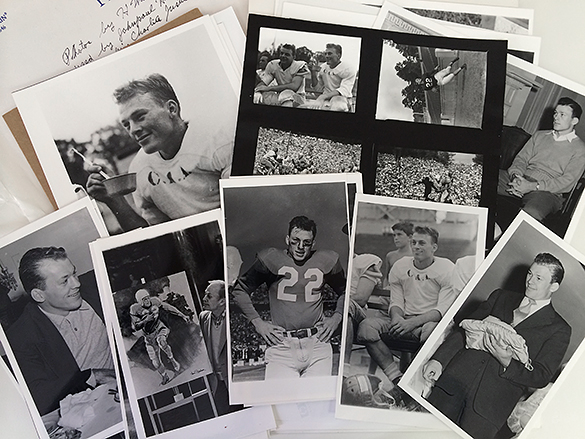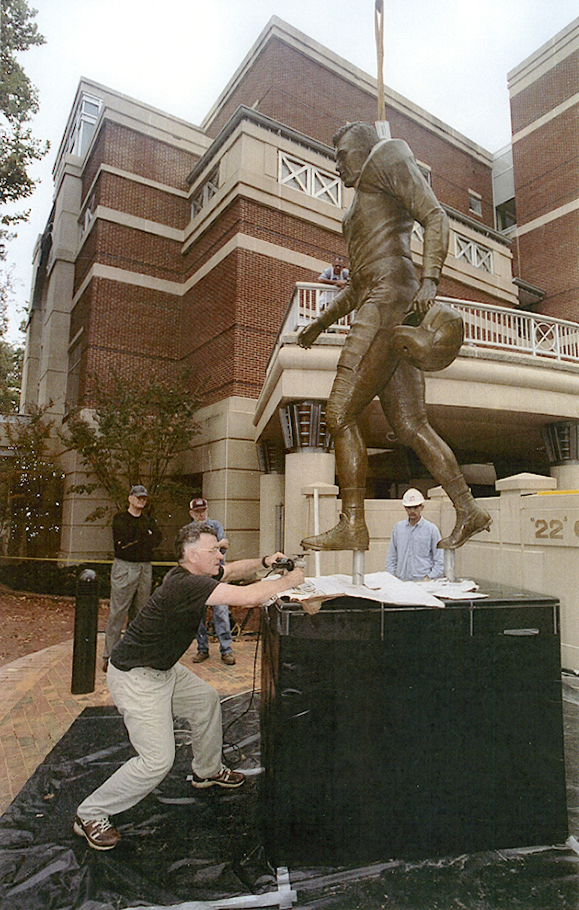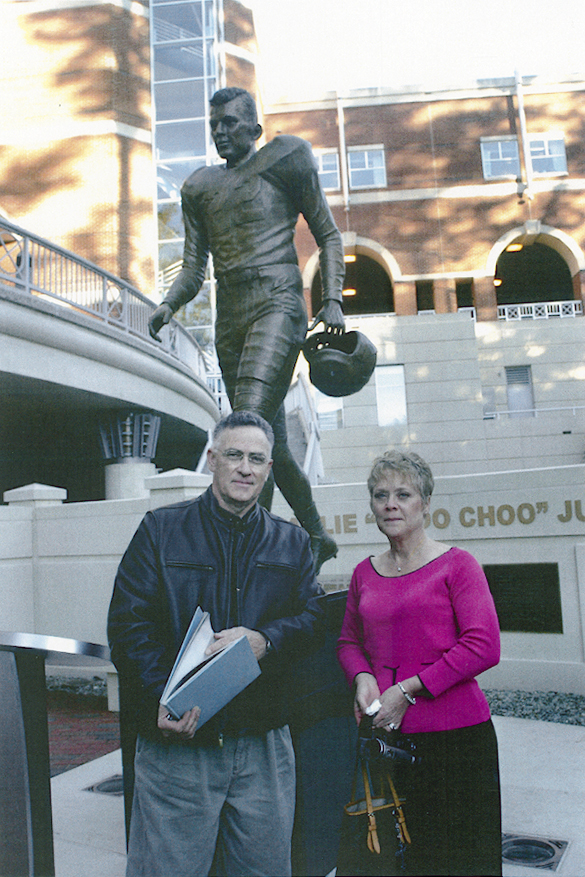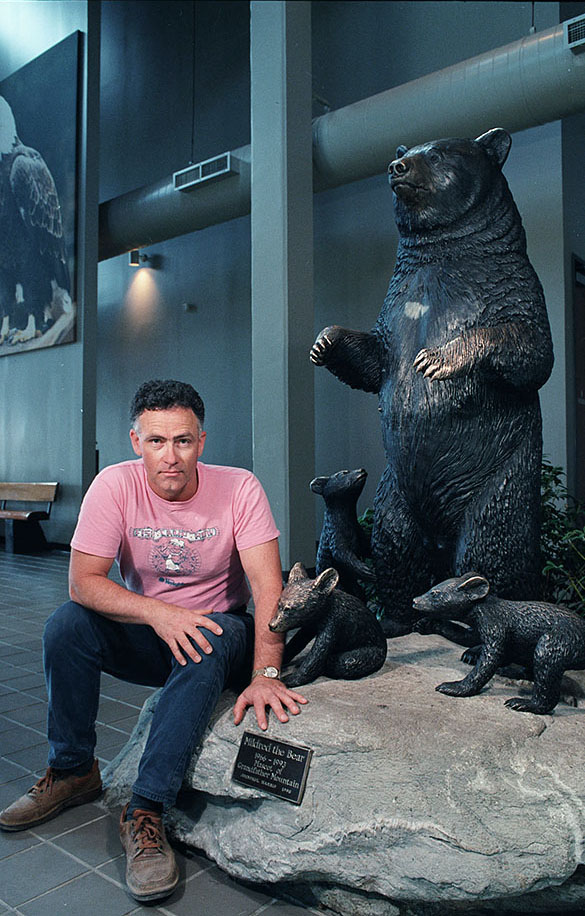Head Coach Larry Fedora’s 2014 Tar Heels are going bowling.
For the 31st time, going back to 1947, UNC’s football team will play in a post season bowl game—this time it’s the “Quick Lane Bowl” in Detroit on Friday, December 26th at 4:30 PM (ET). The game will be on ESPN.
Of the 30 bowl games played, the Tar Heels have been victorious 14 times. Of the 16 losses, the one on January 2, 1950 was one of the toughest. Morton collection volunteer Jack Hilliard looks back on that dismal day in Dallas, almost 65 years ago.

The Apache Belles majorettes from Tyler, Texas during the 1950 Cotton Bowl festivities. A caption in the Greensboro News identified the majorette as Iwanna Burk, sister of Baylor star quarterback Adrian Burk.
When UNC Head Football Coach Carl Snavely arrived at his 215 Wollen Gym office on Wednesday, November 23, 1949, a New Year’s bowl game was not on his radar. After all, Carolina had lost 3 games during the season and two of those losses were decisive: Notre Dame 42 to 6 in Yankee Stadium and Tennessee 35 to 6 in Kenan Stadium.
Coach was concentrating on the upcoming game with Virginia three days away. Then, the phone rang and everything changed. It was Dan Rogers, Chairman of the Board, Cotton Bowl Athletic Association, calling from Dallas. He told Coach Snavely that Carolina was on a short list for a Cotton Bowl invitation. He then added, Virginia is on that list also. So the UNC vs. UVA game on Saturday, November 26, 1949 would now become the “Cotton Bowl Invitational,” with the winner going to the top of the list and getting the bid.
Snavely told his team about the phone call when the varsity was traveling by bus to the Duke–Carolina freshmen game in Durham on Thursday, the 24th. The next day the team voted to accept the bid if offered.
The Greensboro Daily News on Saturday morning featured a large Hugh Morton photograph of UNC All-Americas Charlie Justice and Art Weiner. The headline caption read “Heading for the Last Roundup.”
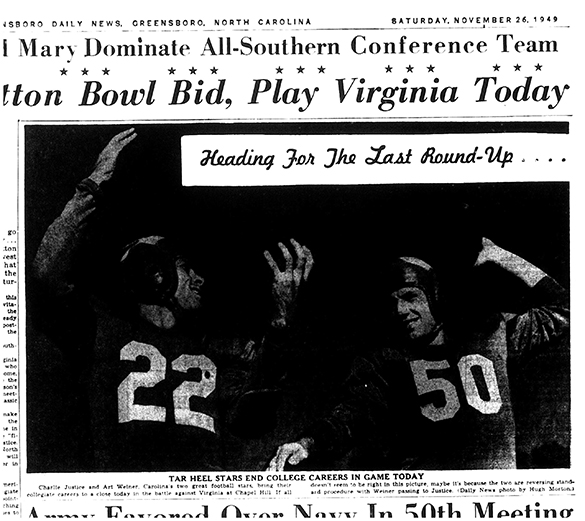 On Saturday, November 26, 1949, the largest football crowd in Chapel Hill to date—48,000—gathered in ideal football weather to see Justice and Weiner play their final varsity game in Kenan Stadium. Veteran CBS Radio broadcaster Red Barber was in town to call the game.
On Saturday, November 26, 1949, the largest football crowd in Chapel Hill to date—48,000—gathered in ideal football weather to see Justice and Weiner play their final varsity game in Kenan Stadium. Veteran CBS Radio broadcaster Red Barber was in town to call the game.
Tar Heel fans were not disappointed.
After a scoreless first quarter . . . two plays into the second quarter, it was Justice on a typical, zigzagging run off left guard for a 14-yard touchdown and Carolina led 7 to 0 following Abie Williams’ point after. At the 13:30 mark it was Justice again, this time a 63-yard touchdown pass to Weiner. Williams was true again on the PAT and Carolina led 14 to 0 at the half.
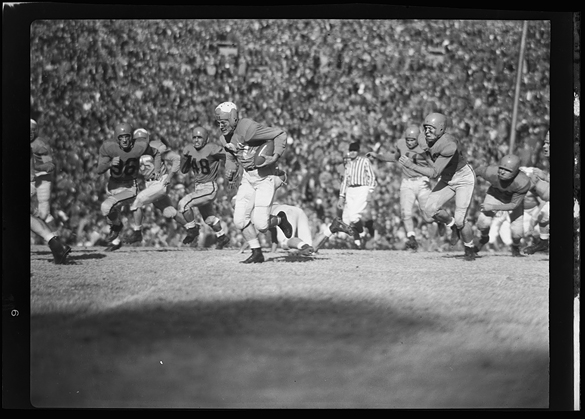
Until yesterday, this photograph was only identified as a Charlie Justice negative amid hundreds of UNC football negatives. This photograph of Justice’s 14-yard touchdown run against the University of Virginia appeared in the Wilmington Star-News on Sunday, November 27th, page 12-A.
Twelve high school bands were on hand to entertain during halftime. The game was dedicated to William Rand Kenan, Jr., who had donated the stadium in 1927. He was a special guest on this day.
The third quarter, like the first, was scoreless, but in the fourth quarter, Virginia was able to put together a 43-yard drive and was finally on the scoreboard with 2:30 remaining in the game. Carolina accidentally touched Virginia’s on-side kick and UVA took over at their own 48. Four plays and two first-downs later, Virginia was at the Carolina 7-yard line with 0:32 on the clock. Three Cavalier passes failed; on fourth down they tried a double-reverse play, but Tar Heels Art Weiner and Roscoe Hansen stopped the ball carrier back on the 8-yard line to seal the victory.
Following the game, Sports Information Director Jake Wade made the announcement: the Heels had been invited to play in the Cotton Bowl, and the team and the University administration had approved. Carolina, the Southern Conference Champion, would play Rice Institute (Rice University today), the Southwest Conference Champion on January 2, 1950.
Snavely ordered a break for his troops from November 28th until December 3rd. A week of practice followed, then a break for exams. Preparation for Rice would resume on December 16th and continue until the Christmas break on December 21st.
The Tar Heel team reassembled in Chapel Hill on December 26th and held one final practice on the 27th before departing for Big D.
It was cold and clear at Raleigh-Durham Airport at 9:35 AM on December 28, 1949, when the first of two planes carrying the Tar Heel football team took off for Dallas. The Capital Airlines DC-4 was labeled “Cotton Bowl Special,” and carried Justice and Weiner plus 46 other UNC players and part of the coaching staff. Then at 2 PM, the second plane carrying the remainder of the team and staff took off. On hand for both takeoffs was Chapel Hill Mayor Ed Lanier.
The first flight arrived in Dallas at 4:25 PM and was greeted by 3,000 Tar Heel fans and coeds from SMU plus Mr. SMU himself, Doak Walker. Originally, Charlie and Sarah Justice were going to stay at the Melrose Hotel with the coaches and team, but Justice got a letter a week earlier from Doak Walker inviting them to spend the week at the Walker home.
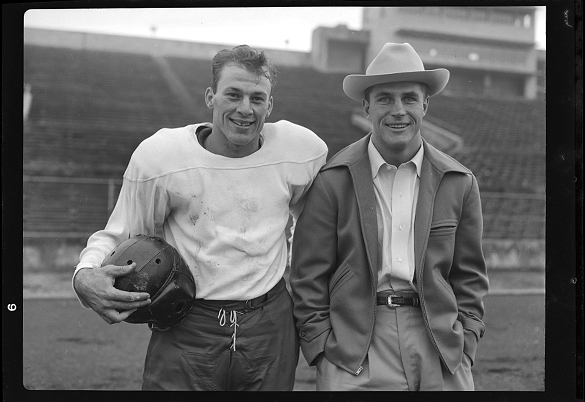
UNC’s Charlie Justice and SMU’s Doak Walker inside Dal-Hi Stadium, Dallas, Texas.
December 29th was a practice day for Carolina . . . a workout at Dal-Hi stadium in the morning and movie viewing in the afternoon. Walker was present for both sessions, adding coaching suggestions along the way since he had already played Rice earlier in the season. Morton’s picture of Justice, Walker, and Snavely viewing game movies made the papers back in North Carolina on December 30th.
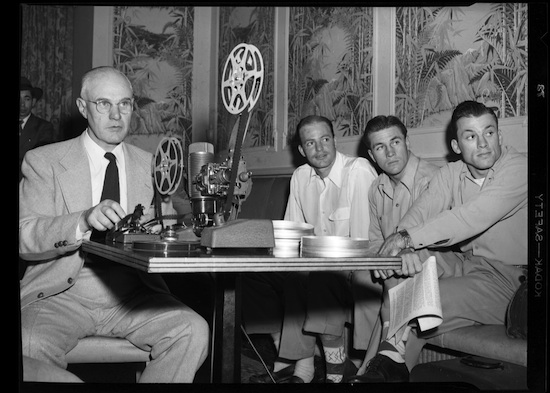 Also, early on the morning of the 30th, the football team got the good news from Chapel Hill that Carolina’s basketball team had upset Duke 59 to 52 in the first annual Dixie Classic back in Raleigh the night before.
Also, early on the morning of the 30th, the football team got the good news from Chapel Hill that Carolina’s basketball team had upset Duke 59 to 52 in the first annual Dixie Classic back in Raleigh the night before.
Following an afternoon practice, Coach Snavely said: “Right now we are in the best condition for the ball game this season. The boys are in good spirit and I know they are having a good time here in Dallas.”
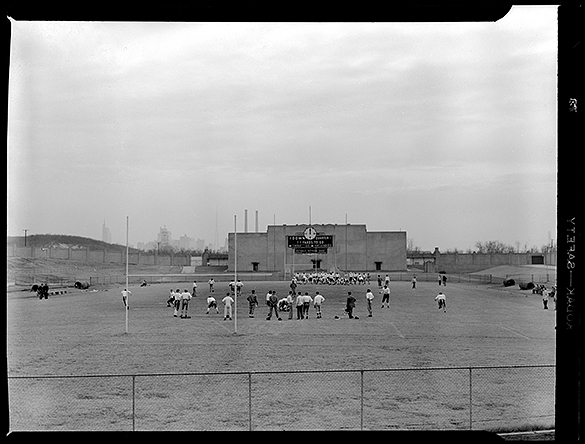
UNC football team practice session at Dal-Hi Stadium.
The Carolina team and coaches along with photographer Hugh Morton attended the annual Cotton Bowl luncheon put on by the local Optimist Club on Saturday the 31st. The keynote speaker was Supreme Court Justice Tom C. Clark, a native of Dallas.
The Sunday papers predicted clouds and a 7-point win for Rice on Monday. Back home, The Greensboro Daily News published on the front page of the Sports section a picture of Justice and Bob Gantt at work on the practice field. It was now time to get serious about the 14th Annual Cotton Bowl.
Monday, January 2, 1950 was a cold, damp day in Asheboro, North Carolina. I remember sitting with my best buddy on the front steps listening to the game on his portable radio that he had gotten for Christmas. Legendary NBC sports broadcaster Bill Stern was the play-by-play announcer with analysis and color by Kern Tips. We were listening to station WBIG in Greensboro. (The game was also on WSJS radio in Winston-Salem). The Greensboro Daily News headline that morning read:
“JUSTICE ERA COMES TO AN END AS TAR HEELS BATTLE OWLS IN COTTON BOWL”
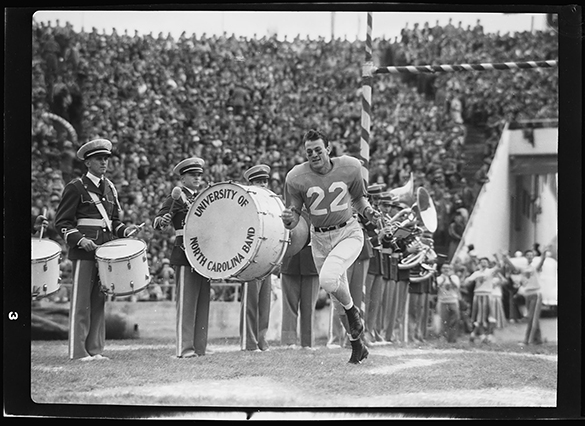
Charlie Justice runs onto the field for the last time for Carolina at the Cotton Bowl on January 2, 1950, Dallas, Texas.
The University of North Carolina Band, under the direction of Prof. Earl Slocum was part of the pre-game festivities as Charlie Justice ran onto the field for the final time in a Carolina varsity uniform. Morton’s image of Justice and the band is the first picture in the 1958 Quincy-Scheer Justice biography (on page 3).
Then as 75,347 fans watched, UNC Captain Charlie “Choo Choo” Justice met at midfield with Rice Co-Captains James “Froggy” Williams and Gerald Weatherly for Referee Ray McCullock’s coin toss. Hugh Morton documented that scene as well before returning to his Carolina sideline position.
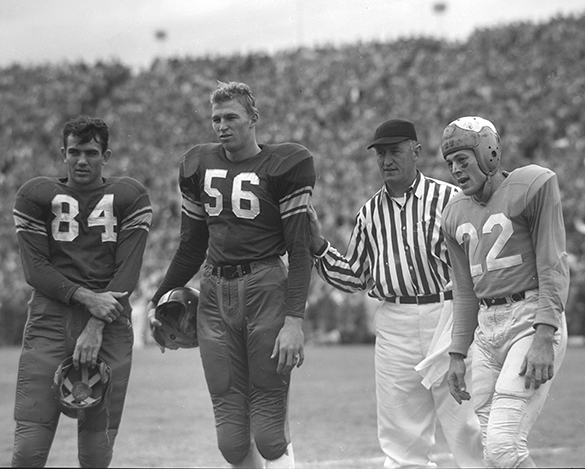
Gloomy skies prevailed as neither team could do much in the first quarter of play which ended with neither team on the scoreboard. Early in the second quarter, Rice quarterback Tobin Rote passed to Billy Burkhalter for a 44-yard touchdown. Later in the quarter, Rice took possession at midfield and drove for a second score with fullback Bobby Lantrip going the final three-yards to make the halftime score 14 to 0.
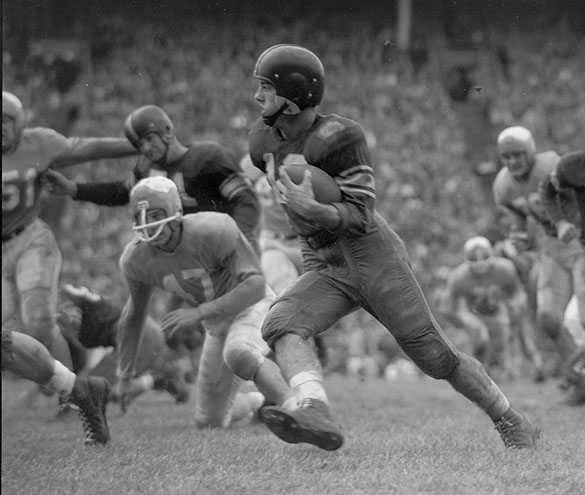
Rice right halfback Billy Burkhalter (#12), UNC right tackle Bill Kuhn (#51), and UNC Right End Ed Bilpuch (#47). Crop from Morton’s original negative for this blog post, the image appeared evern more tightly cropped—and without credit—in the January 4th issue of the Wilmington Morning Star.
The halftime show, directed by Frank Malone, Jr. featured the Rice Institute Band plus nine high school bands from the Dallas-Fort Worth area. The highlight of the show was a performance by the Apache Bells of Tyler Texas Junior College and finally the presentation of the 1950 Cotton Bowl Queen, Miss Eugenia Harris from Houston.
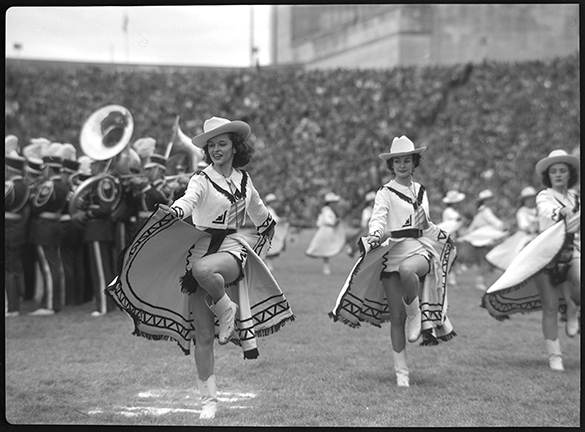
When the third quarter began, Rice picked up where they left off, this time it was a 17-yard pass from Tobin Rote to “Froggy” Williams to make the score 21 to 0 with 15 minutes to play.
Early in quarter number four, following an interception at the Carolina 15, Rice, on two plays, scored their final points of the day when Burkhalter scored his second touchdown of the afternoon. With 9 minutes remaining, the score was Rice 27 – Carolina 0.
At this point, Carolina seemed to come alive. They drove 65 yards—the final 7 yard a touchdown pass from Justice to Paul Rizzo. During this drive, Morton took one of his most famous Charlie Justice pictures. The image is part of the North Carolina Collection Photographic Archives exhibit, “Photographs by Hugh Morton: An Uncommon Retrospective.”
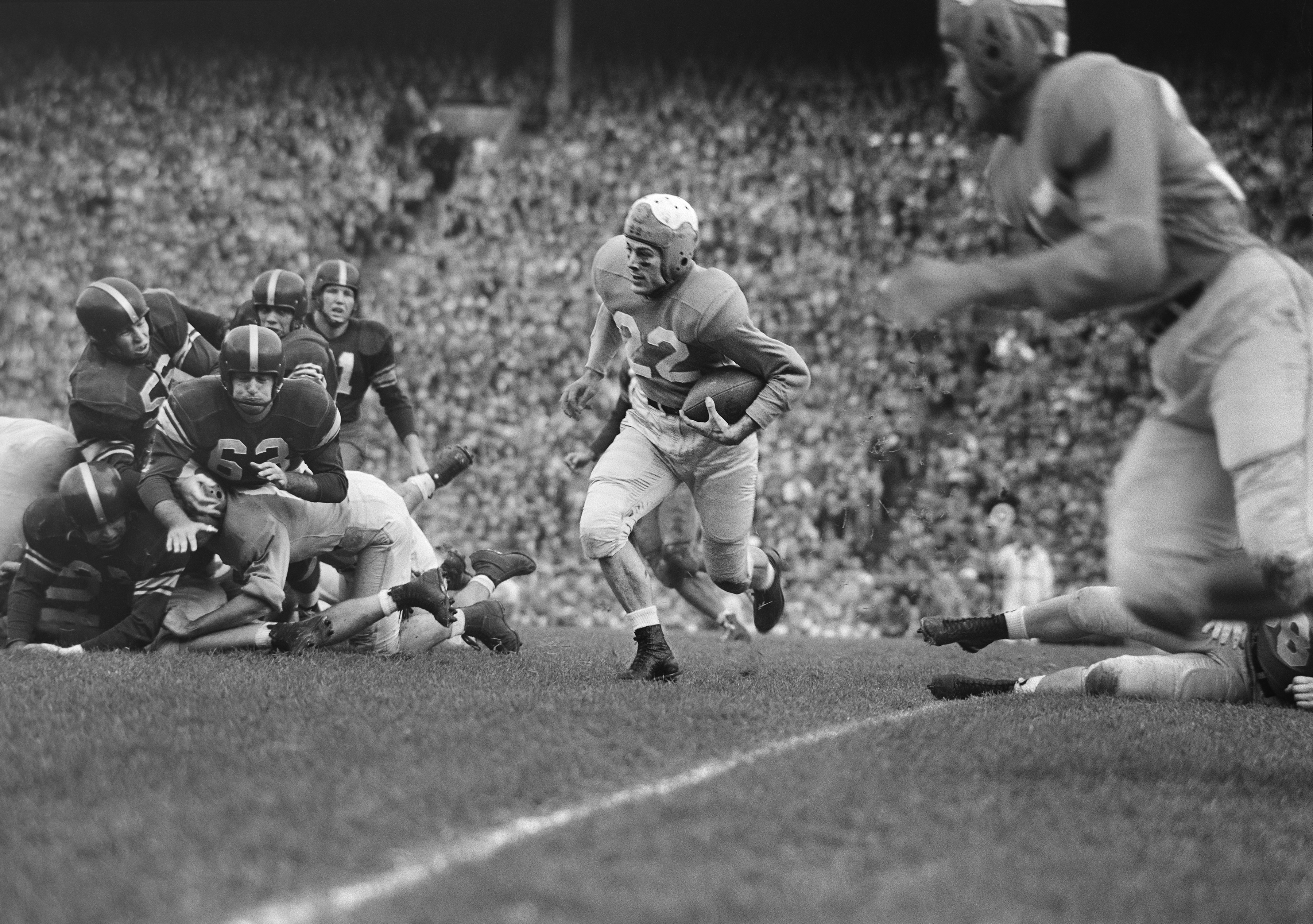 Then Carolina put on another drive—this one 80 yards— and fullback Billy Hayes accounted for 41 of them. The final play of the drive came when Justice went off left tackle, but Rice defensive end Billy Taylor grabbed him by the sleeve. Justice tossed the ball to his left where Rizzo caught it and raced into the end zone. Abie Williams’ extra point made the final score 27 to 13. The Carolina comeback was too little, too late.
Then Carolina put on another drive—this one 80 yards— and fullback Billy Hayes accounted for 41 of them. The final play of the drive came when Justice went off left tackle, but Rice defensive end Billy Taylor grabbed him by the sleeve. Justice tossed the ball to his left where Rizzo caught it and raced into the end zone. Abie Williams’ extra point made the final score 27 to 13. The Carolina comeback was too little, too late.
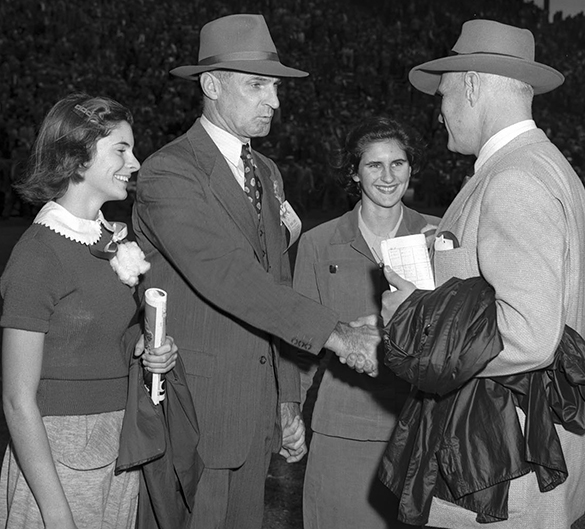
The post-game handshake between Rice head coach Jess Neely—joined by his daughter’s Joan (left) and Mary– and UNC head coach Carl Snavely (right). This Morton photograph appeared in the January 4th issue of the Greensboro Record,
Following the traditional coaches handshake at midfield, each coach commented on the game. Rice head coach Jess Neely simply said, “I had figured we could run against North Carolina.” And run they did—226 yards to 174 for UNC. Tar Heel head coach Carl Snavely said, “We simply did not have a bowl team this year.”
Charlie Justice, in a 1995 interview with biographer Bob Terrell, said, “We didn’t deserve the bowl trip. The Cotton Bowl invited us so my playing could be measured against Doak Walker, who had a great season at SMU. Texans had seen Doak play all season but hadn’t seen me, so this gave them the opportunity.”
Carolina and Rice each got a check for $125,951, while the players each got engraved Cotton Bowl watches and beautiful Cotton Bowl blankets.

On Wednesday, January 6th, Hugh Morton’s post-game picture of Charlie Justice and Paul Rizzo graced the sports page in The Greensboro Daily News. The picture also turned up in the 1950 UNC yearbook, the “Yackety Yack” on page 271.
The game was not national televised, but even if it had been, North Carolina’s two TV stations at the time, in Greensboro and Charlotte, would not have been able to carry it because the AT&T cable had not been completed in the state. That would come nine months later on September 30, 1950.
So WFMY-TV in Greensboro made arrangements to get NBC-TV to film the game, then fly the film back to Greensboro for showing. WFMY Sports Director Charlie Harville would narrate the film. The showing was scheduled for 9:30 PM on Wednesday, January 4th. However, rainy, foggy weather in Dallas prevented the plane carrying the film from taking off, so the showing had to be delayed until 9:30 PM on Thursday. Folks from all across the state came into Greensboro to watch. It turned out to be the largest single audience in the history of television in North Carolina at that time. The program was so popular, the station repeated the film on Friday, January 6th. If Carolina could have won, the station probably could have made an unprecedented third showing.
